World Bank in India












For a week Eltira Sangma from the West Khasi Hills in Meghalaya, India, noticed she had no energy.
“I was feeling tired all the time and did not feel like cooking for my family or doing any chores at home,” said the mother of an 11-year-old boy.
Worried, Eltira visited the Shallang Primary Health Centre (PHC) 1.5 kilometres away to seek medical advice. After some tests, she was given an iron injection.
Earlier, it would not have been so easy for her to get the injection at the health center near her village of Rongkhugre, tucked away on a distant hillside amidst green foliage and banana plantations. Crucial medicines and injections were often in short supply or too expensive at the far-flung centers.
But ever since a new drone service was introduced by the Government of Meghalaya under the World Bank
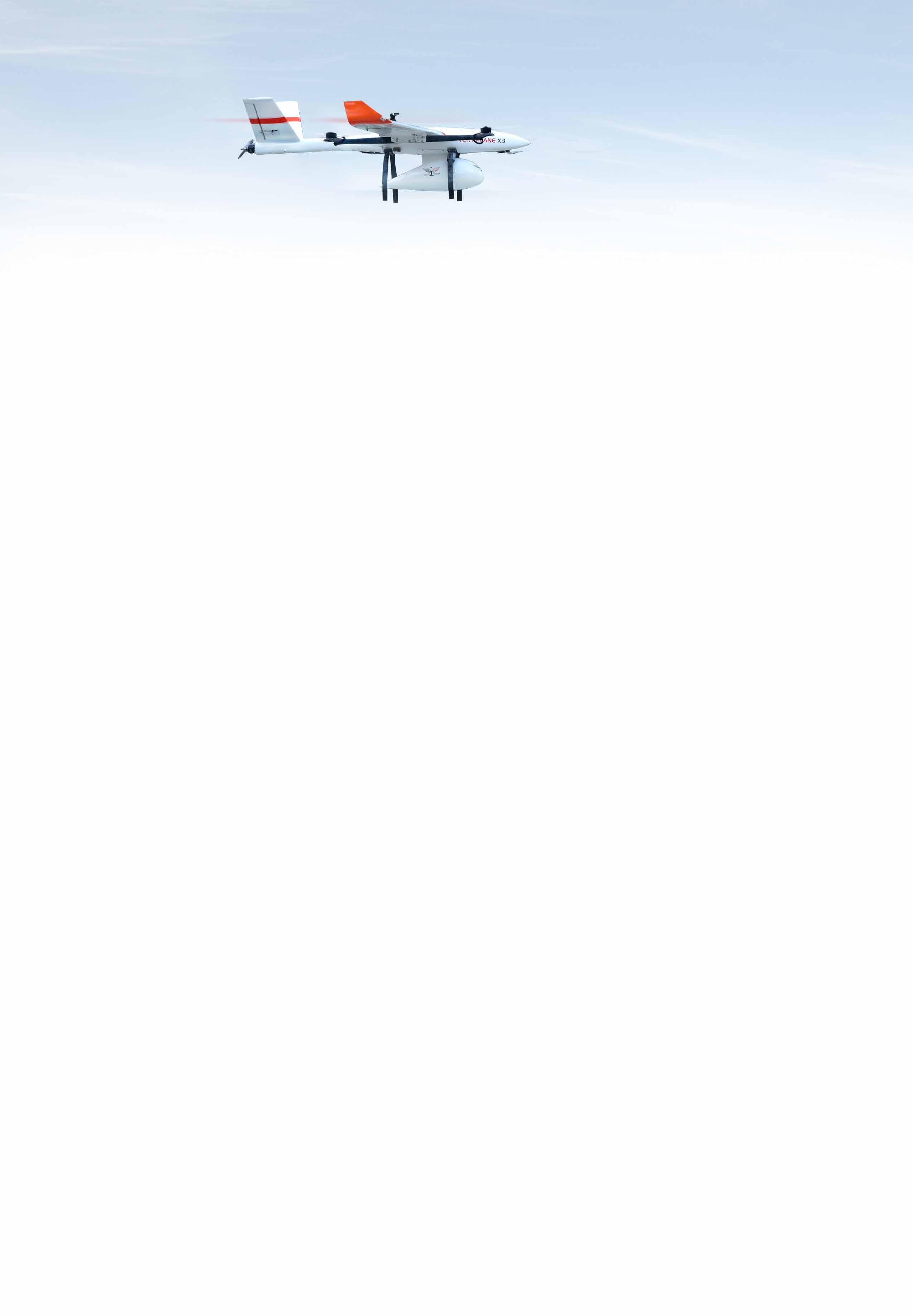
financed Meghalaya Health Systems Development Project, essential injections and medicines are brought over once a week by a drone from Jengjal District Hospital over 100 kilometres away.
The medicines are also free of cost. Otherwise, the injection, which needed to be administered three times a week, would have cost Eltira Rs. 280 each time.

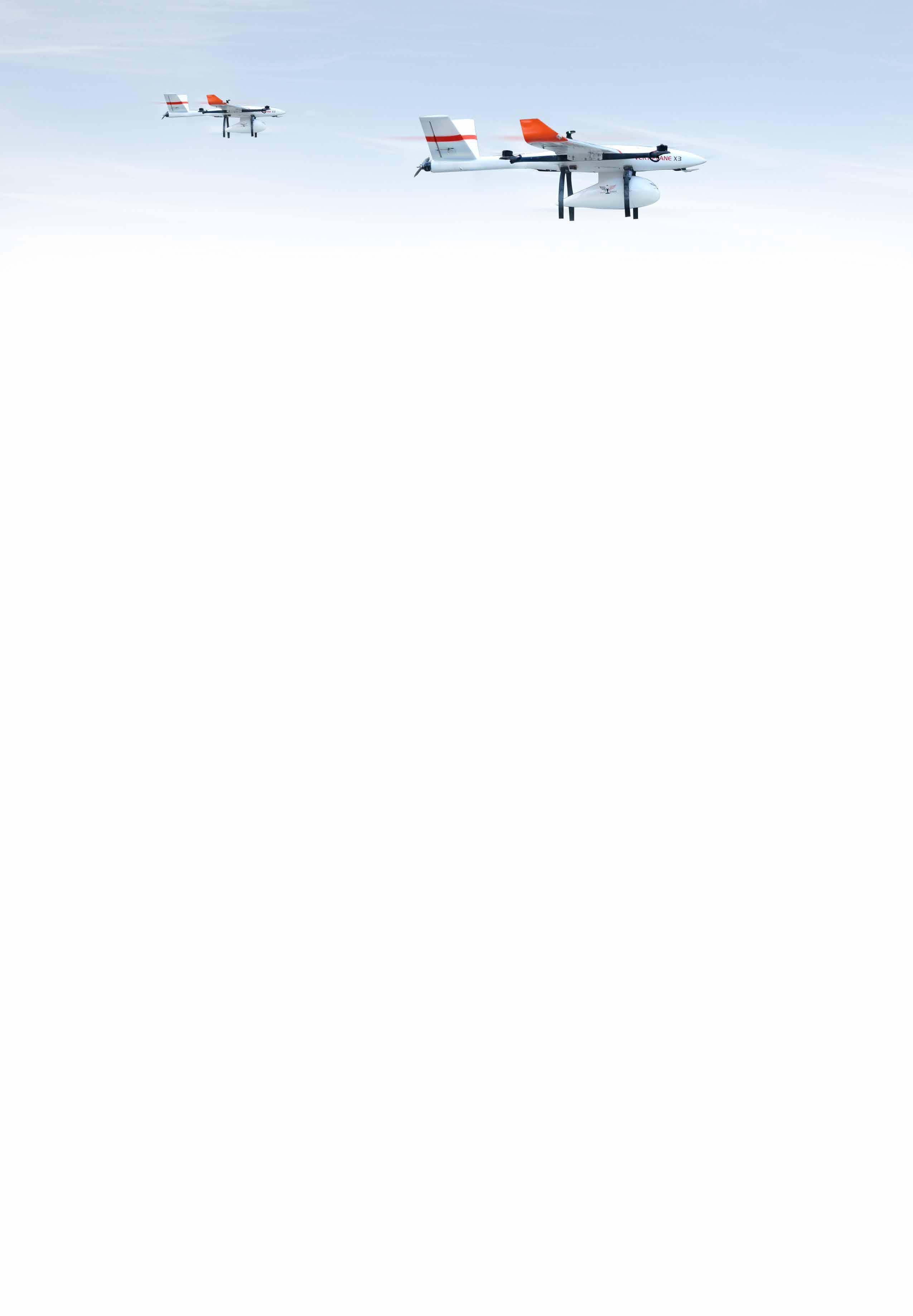
Supplying inexpensive quality healthcare to hard-toreach areas has long been a challenge for Meghalaya. Almost eighty percent of the people living in rural areas find it difficult to access health services, especially during the rainy season between June and September.
“In these circumstances, women’s health often does not become a priority. They avoid visiting healthcare facilities unless it is an emergency,” said Dr Alisha G. Momin, Medical Officer at the Shallang PHC.
The Shallang PHC covers 91 villages in the West Khasi Hills district and receives some 20-30 patients every day; this can go up to around 70 patients on a “market day.” On the day we visited, the PHC received three cases of road traffic accidents, unfortunately, a usual occurrence on the winding hill roads. But thanks to the stock of medicines brought over once a week by drone, there were enough tetanus injections to administer to the injured villagers.

At the same PHC, 53-year-old Merina Sangma was getting treated for hypertension. “Earlier, I would have referred her to the Nongstoin Civil Hospital 80 kilometres away,” explained Dr Momin. “But just last week, the drone dropped off a supply of injectables for hypertension—a surprisingly common disease in these parts—and we can treat Merina here itself.”


The Dadenggre Community Health Centre (CHC) is some 150 kms from Shallang. Dr Dimpy Angel Kmarak, the Medical Officer at the center feels the drone service is a lifesaver.
“The 12-13 villages under this CHC are very hard to reach, and in fact, are unreachable during the rainy season. The drone service has at least ensured that we have adequate supply of medicines to serve pregnant women who are the focus of the Chief Minister’s Safe Motherhood Scheme,”
- Dr Dimpy Angel KmarakThe drones don’t return empty-handed but take patients’ blood samples for testing. The results are sent in less than 3 hours through WhatsApp, considerably reducing
the turn-around time for patients. “These services have been very helpful in increasing the access and quality of healthcare to villagers in this area,” added Dr Momin.
The drone service, started in December 2022, works on a hub and node basis, where the Jengjal SubDivisional Hospital is the hub where the drone station is based. All the medicines and injections are procured here; there is a laboratory to run tests as well. There are currently 12 nodes, including the Shallang PHC and Dadenggre CHC.
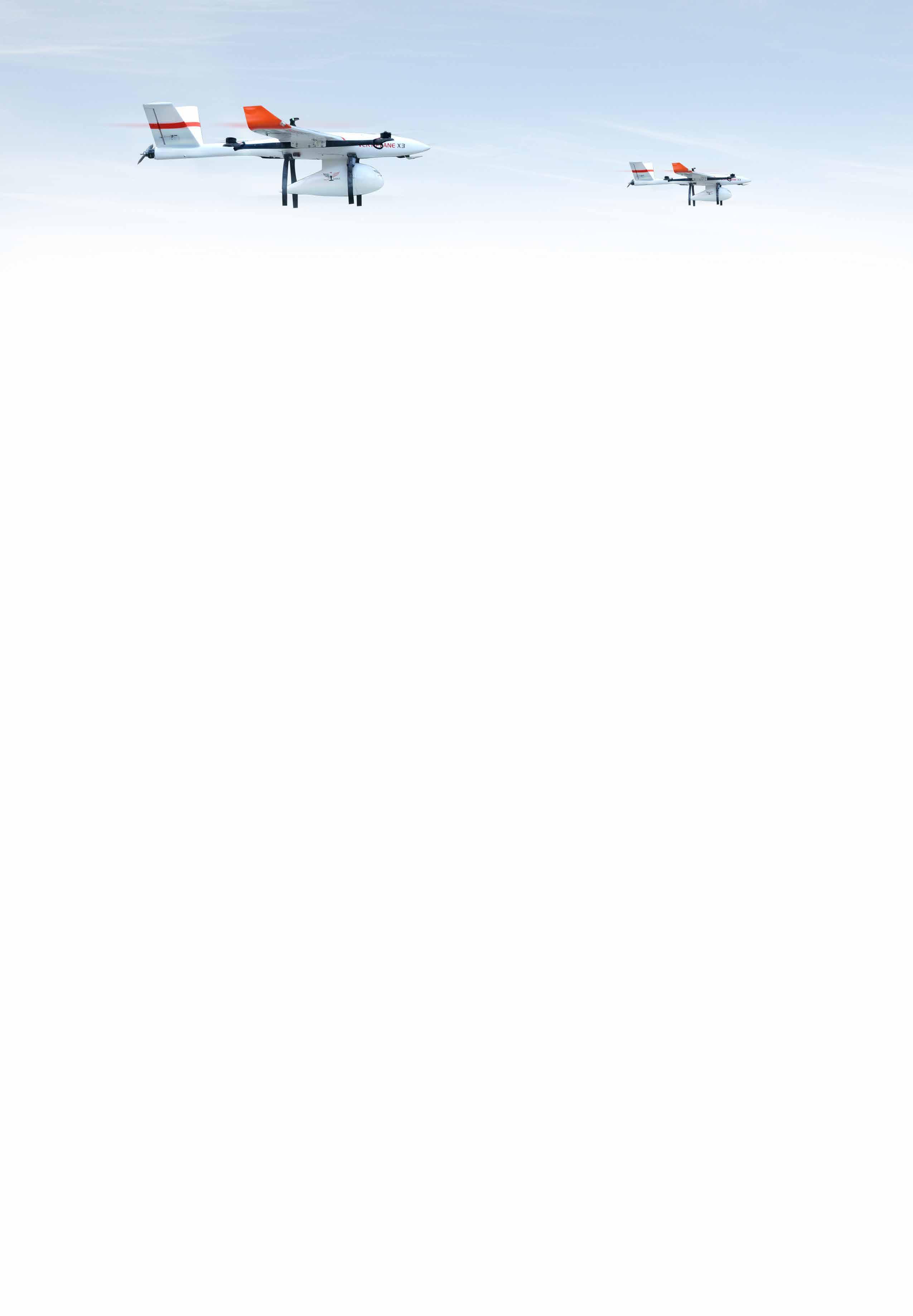
The drones fly to these nodes on a weekly basis, taking medicines and injections based on the needs of the different health centres, and bringing back blood samples for testing.
“We started with six PHCs in December 2022 and expanded to 12 within the next two months,” explained an elated Vineeth Pandalai, Operations Manager at Tech Eagle Innovations, the company that is conducting these flights. “Our aim is to bring in another five PHCs by July 2023. Currently, one drone, supervised by a manager and two pilots, serves 12 PHCs and CHCs. Several sub centres around the area are also being served tangentially.”
The drone landing spot at the Shallang PHC is marked by a big red cross on a round concrete landing pad. “The flight takes exactly 46 minutes from Jengjal more than 100 km away and is optimized each time to use less battery and carry more load,” Pandalai explains.
At the Dadenggre CHC, the absence of any open area for a landing pad was a challenge. “The drone ideally needs a concrete surface to land, as it can throw up a lot of dust when landing. So, we are using a nearby basketball court. This is not ideal as every time the drone needs to land, they need to flash a light and blow a siren to clear people from the area.”
Immediate future plans for the drone services include creating a blood bank at the Jengjal Sub-Divisional Hospital and providing matched blood during critical emergencies.
By using drones, Meghalaya is showing how technology can be reimagined to bring quality services to the people.

Since 2021, the Meghalya Health Systems
Strengthening Project with World Bank support of $40 million has been helping the north-eastern state of Meghalaya strengthen its public health system where access to quality health services, remains a challenge, particularly in rural areas. The project is expanding the design and coverage of the state’s health insurance program; improving the quality of health services through certification; and enabling efficient and improved access to medicines and diagnostics.
The project’s performance-based financing system is aimed at bringing more accountability at all levels. It is benefitting the health sector staff at the primary and secondary levels by strengthening their planning and management capabilities and building their clinical skills. The project is also enabling women to better utilize healthcare services at the community level.



More than 3 million people across all 11 districts of the state are expected to benefit from the project.
Historically, cities across the world have been designed to fit the needs of able-bodied men, or a neutral, often male, user. Yet, cities are experienced differently by men and women. Women and girls find their access to employment, education, care services and even leisure is constrained when urban mobility systems and public spaces are not safe and inclusive.
Across Indian cities, studies show that concerns about commuting safely during the late evening hours or beyond a particular radius are among the biggest barriers to girls and women going to school, college and work. For instance, a 2020 study in Bengaluru showed that only 2% of women commuters surveyed made journeys after 9 pm. Barriers to mobility can thus thwart women’s long-term aspirations, eroding their financial independence and agency. The threat of sexual harassment deters women from stepping out.

For instance, a 2017 study in Delhi showed that women were willing to travel for 27 minutes more each day to take a route that was perceived to be safer. It will thus be important to devise strategies to prevent and penalise sexual harassment in public spaces.
Typically, women travel shorter distances at off-peak hours, and make chained trips, frequently changing between transport modes to complete multiple tasks, balancing domestic errands and employment. Systems are, therefore, needed to collect and analyse genderdisaggregated data to understand women’s mobility patterns and design public transport services accordingly.
It was after the Mumbai Railway Vikas Corporation, working with the World Bank, conducted a detailed study of mobility patterns on suburban trains, that it identified women’s safety as a key priority and devised solutions to make platforms, stations, and trains safer for women. These activities sought to do more than just introduce women-only trains — the Ladies Specials — by addressing the fundamental design of the infrastructure to make it more women-friendly.

Hiring more female staff can make travel safer. In Kochi, for instance, 80% of the metro staff are women, working as station managers, train drivers, ticket vendors, and cleaning staff. Similar initiatives can be taken by other bus and rail agencies to enhance safety.
What’s more, since deep-rooted social norms restrict women’s movement outside their homes, local communities need to be brought on board as partners to help shift the norms around women’s mobility. A number of community-based organisations have been working across cities such as Delhi, Gurugram, and Pune to sensitise communities; they also provide gender sensitisation training for frontline public transport workers.
Under the Nirbhaya Fund, the Centre provides valuable resources to states and central ministries to implement solutions for enhancing women’s safety. Since 2015, eight cities (Delhi, Mumbai, Kolkata, Chennai, Bengaluru, Hyderabad, Ahmedabad and Lucknow) have used these funds to identify hotspots for crime, enhance police capacity for investigating crimes against women and establish one-stop centres for violence survivors.
Moving a step further, the Greater Chennai Corporation established a Gender and Policy Lab, which will support the government of Tamil Nadu in implementing projects under the Nirbhaya Fund to create safer public spaces in the city. An assessment to understand gender differences in mobility was carried out, alongside a safety audit, in Tondiarpet in north Chennai. Installation of CCTV cameras and panic buttons in city buses is also underway, with Chennai’s Metropolitan Transport Corporation establishing a command-and-control centre to monitor incidents of harassment.
Our experience in Chennai and Mumbai, and other cities globally, shows that addressing gender concerns in urban mobility and public spaces requires long-term commitment from multiple stakeholders, with solutions aimed at addressing deep-rooted issues.

Drawing lessons from international best practices and project experiences in India, the World Bank has developed a toolkit for the Indian context, which both government and private agencies can use to make cities safer and more inclusive of women.
The toolkit outlines a four-pillar approach: First, assess the ground situation to understand genderdisaggregated mobility patterns and undertake safety
audits; second, strengthen policies with a focus on fare policies and grievance redressal for sexual harassment; third, build capacity and raise awareness both within government agencies and through partnerships with community-based organisations; and fourth, improve infrastructure and services with a special emphasis on women’s safety and inclusion.
Making cities safer can ensure that women and girls have choices — they can choose to stay longer in the office, go to better educational institutions, and even have a wider array of entrepreneurship opportunities — all of which will help increase female labour force participation and, in turn, boost economic performance in India.
Auguste Tano Kouamé is the World Bank's Country Director for India. Gerald Paul Ollivier is the Lead Transport Specialist, World Bank.The World Bank approved a $82 million loan towards the adoption of global best practices for animal health management to prevent, detect, and respond to endemic zoonotic, transboundary, and emerging infectious diseases. It will strengthen India’s One Health approach, which recognizes that people and animals are connected with their shared environment.

Animal disease outbreaks globally continue to pose risks to public health systems and have enormous economic costs. With India having the largest livestock population in
the world, these risks are particularly high. For example, foot and mouth disease alone costs the country more than $3.3 billion annually.
"The new program will help reduce the risks of animal disease outbreaks by improving disease surveillance and veterinary services in the livestock and wildlife sectors. At least 2.9 million livestock farmers will have increased access to improved animal health services in the participating states of Assam, Karnataka, Maharashtra, Odisha, and Madhya Pradesh."
Auguste Tano Kouame, World Bank’s Country Director for India.
Through state-of-the-art laboratories, the program will also strengthen collaboration and data sharing with the human health sector. It will also enhance food quality and safety in animal products, especially in livestock and wet markets.
The $82 million loan from the International Bank for Reconstruction and Development (IBRD) uses the Program-for-Results (PforR) financing instrument that links disbursement of funds directly to the achievement of specific program results. The loan has a maturity of 11.5 years with a grace period of 4.5 years.
The World Bank approved a $100 million loan to help the state of Odisha strengthen its early forecasting systems for improved response to disasters and enhance its social protection coverage for poor and vulnerable households through digital platforms.

The Odisha State Capability and Resilient Growth Program will help reduce losses caused by natural disasters through a multihazard digital warning system and strengthen the state’s data collection efforts for better resilience planning.
The program will also increase social protection coverage through a cash transfer program, with coastal and underserved communities receiving assistance through online delivery platforms (Mo-Sewa Kendras).
The new Program will support the state’s efforts to enhance digital social service delivery systems.
"The Program will help Government of Odisha scale up existing social protection systems to better protect vulnerable households from climate shocks. The proposed engagement complements reform priorities identified by the Government of Odisha while building on the extensive program of technical assistance provided by World Bank to the state over the past decade."
Auguste Tano Kouame, World Bank’s Country Director for India.
The $100 million loan from the International Bank of Reconstruction and Development (IBRD) uses the Program-for-Results (PforR) financing instrument that links disbursement of funds directly to the achievement of specific program results. The Program has a maturity of 12.5 years with a grace period of three years.
The World Bank has approved a $363 million loan to the southern Indian state of Karnataka to provide clean drinking water supply to 2 million rural households in the state through a piped water connection in their homes.
The Karnataka Sustainable Rural Water Supply Program will support the Government of Karnataka’s ambition to provide functioning tap water connections to every rural household in the state. This will include the construction of the drinking water distribution network and the installation of water meters in rural households.

Will benefit around 10 million people across all 31 districts in the state.
"Gender parity is at the heart of our support to India’s target to get piped water to all rural households. Importantly the Program will enhance the capacity of rural local governments to manage water supply services efficiently which will directly benefit women especially, as they bear the biggest burden of fetching water. They will now have better health and have more time to pursue opportunities for education and formal jobs."
Auguste Tano Kouame, World Bank’s Country Director for India.
The Bank’s Program will support the state government to introduce policies and result-based initiatives that are expected to improve the
overall operational efficiency in the delivery of rural water supply services. Also under the Program.
Around 500 rural water reservoirs in 7 water-stressed districts will be revived to help increase water storage capacity and groundwater recharge .
The $363 million loan from the International Bank of Reconstruction and Development (IBRD), uses the Program-forResults (PforR) financing instrument that links the disbursement of funds directly to the achievement of specific program results. The loan has a maturity of 13.5 years including a grace period of 2 years.
districts
The World Bank has approved a $108 million loan to help the northeastern Indian state of Assam improve disaster preparedness and enhance flood forecasting. The project will benefit around 6 million people and is part of a larger $500 million investment program for Assam.
The Assam Integrated River Basin Management Project will help the state reduce vulnerability to floods and river erosion by building green infrastructure in the Beki and Buridehing river basins, protecting around 100,000 people. The Project will also help strengthen the state’s response to disasters through improved flood forecasting and accurate early warning systems, including through mobile alerts. The Project will provide safer evacuation and shelter facilities including access to climate-resilient flood shelters to at least 10,000 people. The project will also help government agencies
The Project will:
• Build green infrastructure in river basins of Beki and Buridehing to reduce flooding and erosion
• Improve flood forecasting & early warning systems.
• Provide flood shelters for at least 10,000 people
to respond faster during crisis with upgraded state and district emergency operational centers.
The Project will support Assam tackle the immediate challenges of floods and erosion while also helping manage its complex river systems. The Brahmaputra River system is the economic lifeline of Assam, and a critical part of the state’s rich natural resources and cultural heritage. But flooding,
"The 2022 floods adversely impacted millions of people in Assam. This project will build on Assam’s disaster risk management approach thus contributing to climateresilient growth while protecting lives and property for the people of Assam."

riverbank erosion, sedimentation and loss of biodiversity have significant economic and environmental impacts on the state, leading to loss of livelihoods for its people.
The $108 million loan from the International Bank of Reconstruction and Development (IBRD) has a maturity of 11.5 years and a grace period of 4 years.
Auguste Tano Kouame, World Bank’s Country Director for India.
The World Bank has approved a $148 million loan to support the state of West Bengal harness the availability of surface and ground water.
• Better irrigation practices to benefit 960,000 people.
• 4,000 new and existing minor irrigation schemes will serve around 80,000 hectares.
The West Bengal Accelerated Development of Minor Irrigation

Project – Phase II will support the state’s Department of Water Resources Investigation and Development and water-user associations (WUAs) to plan and operate new irrigation structures such as check dams, smallscale storage structures, creek rehabilitation, tube wells, and pump dug wells. The irrigation practices will allow for crop diversification to help yield high-value crops including the production of 17,000 tons of oilseed and at least 10,000 tons of fish each year.
During Phase I, the Project created 2,277 WUAs and reached 125,000 beneficiaries.
"The World Bank is supporting green investments in farmerled irrigation around the world to help them adapt better to climate change challenges. The proposed engagement builds on the success of Phase I to provide climate-smart agriculture technologies and expand market linkages to over 240,000 small and marginal farmer households."
Auguste Tano Kouame, World Bank’s Country Director for India.
The $148 million loan from the International Bank for Reconstruction and Development (IBRD) has a maturity of 11.5 years with a grace period of four years.

How did the farmers of Kottayam district in Kerala, tackle the menace of the Giant African Snail which were destroying their crops. It was through timely and coordinated action between several government agencies and the farmers under the One Health approach adopted by the Government of Kerala.

Learn more:
One Health in Action - Fighting the Giant Snail Menace in Kerala
Read about a community Wi-Fi Radio - a low cost, low tech solution that is providing timely early warning of extreme weather and disaster events and connecting remote locations in the hills of Uttarakhand.


Learn more:
From Labs to Local: How Global Innovation is Building Local Resilience in South Asia
India has shown that an emerging country can also become a world-class contender in the crucial biopharma sector, developing drugs and vaccines for diseases that affect the developing world.
Learn more: Building a home-grown biopharma sector in developing countries: The case of India


Migration is a development challenge. About 184 million people—2.3 percent of the world’s population—live outside of their country of nationality. Almost half of them are in low- and middle-income countries.
As the world struggles to cope with global economic imbalances, diverging demographic trends, and climate change, migration will become a necessity in the decades to come for countries at all levels of income.
World Development Report 2023 proposes an integrated framework to maximize the development impacts of cross-border movements on both destination and origin countries and on migrants and refugees themselves.

This approach enables policy makers to distinguish between different types of movements and to design migration policies for each. International cooperation will be critical to the effective management of migration.



Institutional constraints and weak capacity often hamper the ability of local governments in developing countries to steer urbanization.
As a result, there are not enough cities to accommodate an unabated rural-urban migration and many of those that exist are messy, sprawling, and disconnected. The
flipside is the emergence of entire cities—more than gated communities or industrial parks—led in whole or in part by private actors. To date, little systematic research has been conducted on the conditions that are necessary for such unusual entities to emerge, on the roles played by private actors, or on the consequences for efficiency and equity.
Private Cities: Outstanding Examples from Developing Countries and Their Implications for Urban Policy aims to fill this gap. Using an analytical framework that draws on urban economics and political science, it includes inventories of private cities in the Arab Republic of Egypt, India, Indonesia, and Pakistan and provides structured reviews of 14 outstanding examples across all developing regions.

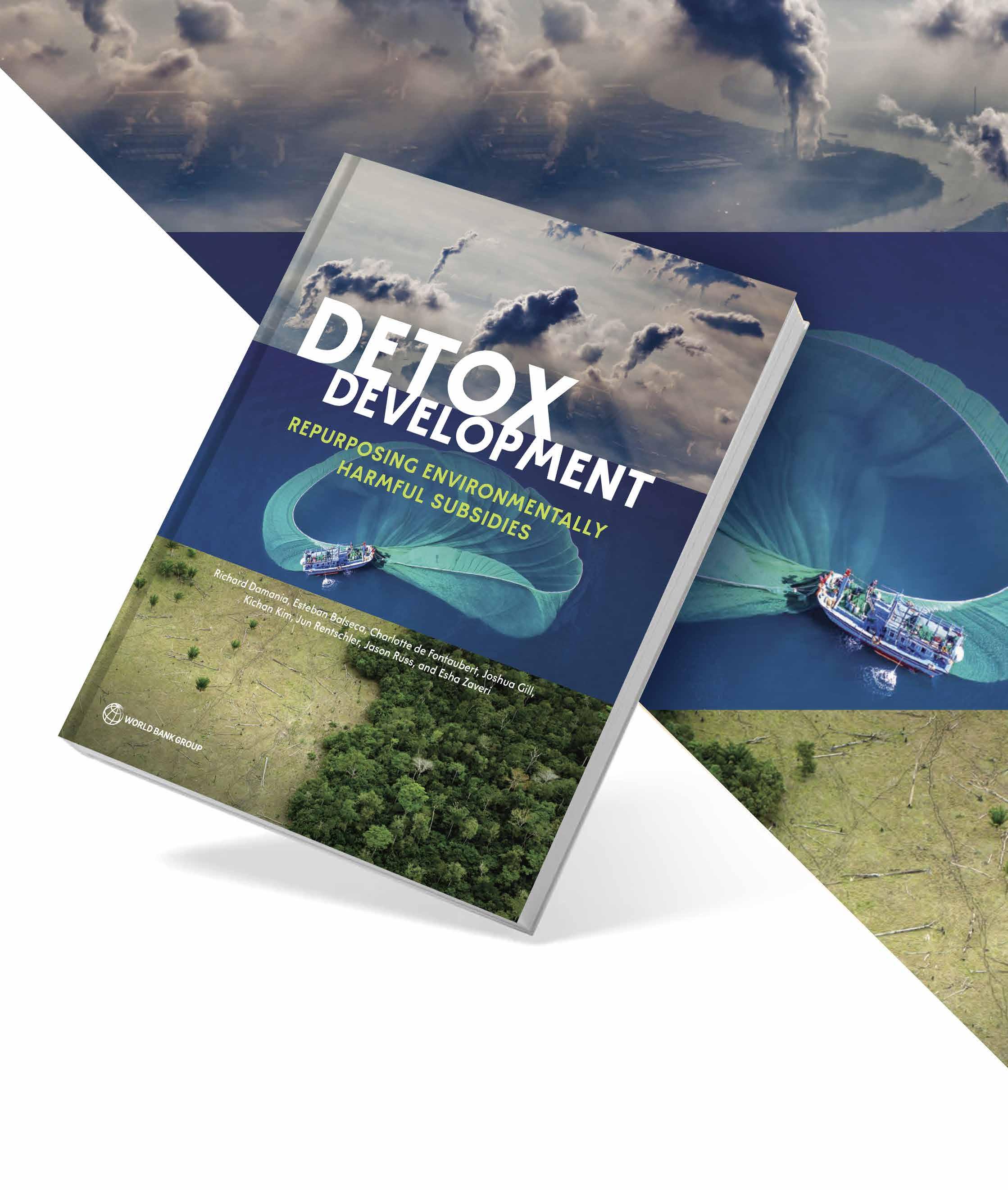
Anew World Bank report examines how subsidy reform can help safeguard the world’s foundational natural assets—clean air, land, and oceans. These assets are critical for human health and nutrition and underpin much of the global economy. But subsidies for fossil fuels, agriculture, and fisheries are driving the degradation of these assets and harming people, the planet, and economies.
This money, numbering in the trillions, could instead be used to finance much-needed climate action in countries across the world.
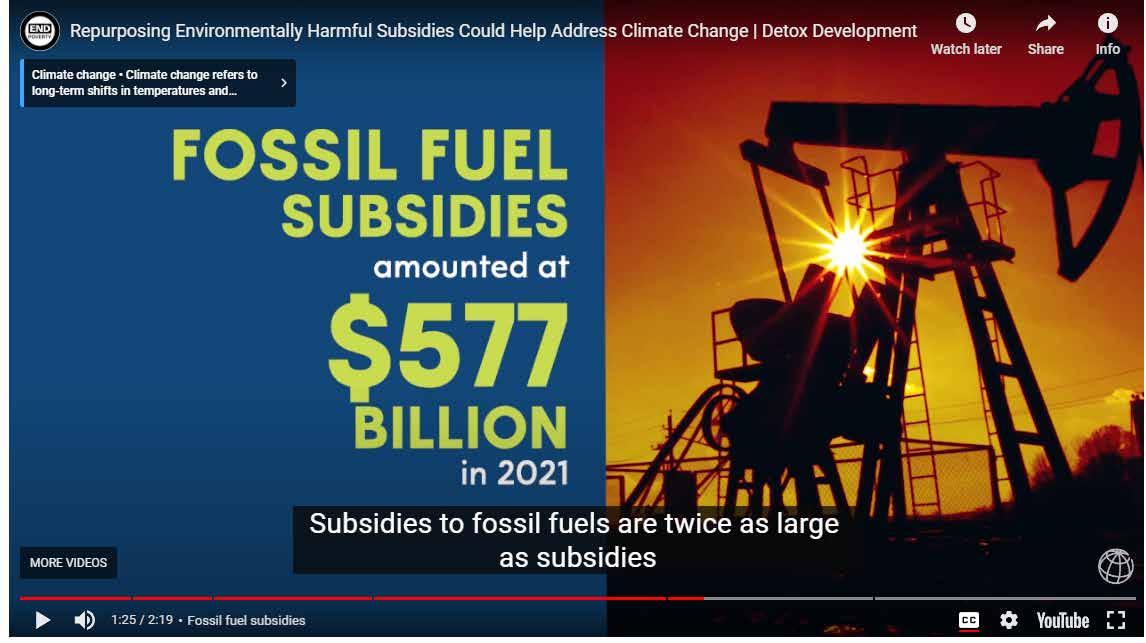
Women, Business and the Law measures global progress toward gender equality in the law. This is the ninth in a series of annual reports that analyze laws and regulations affecting women’s economic opportunity in 190 economies.
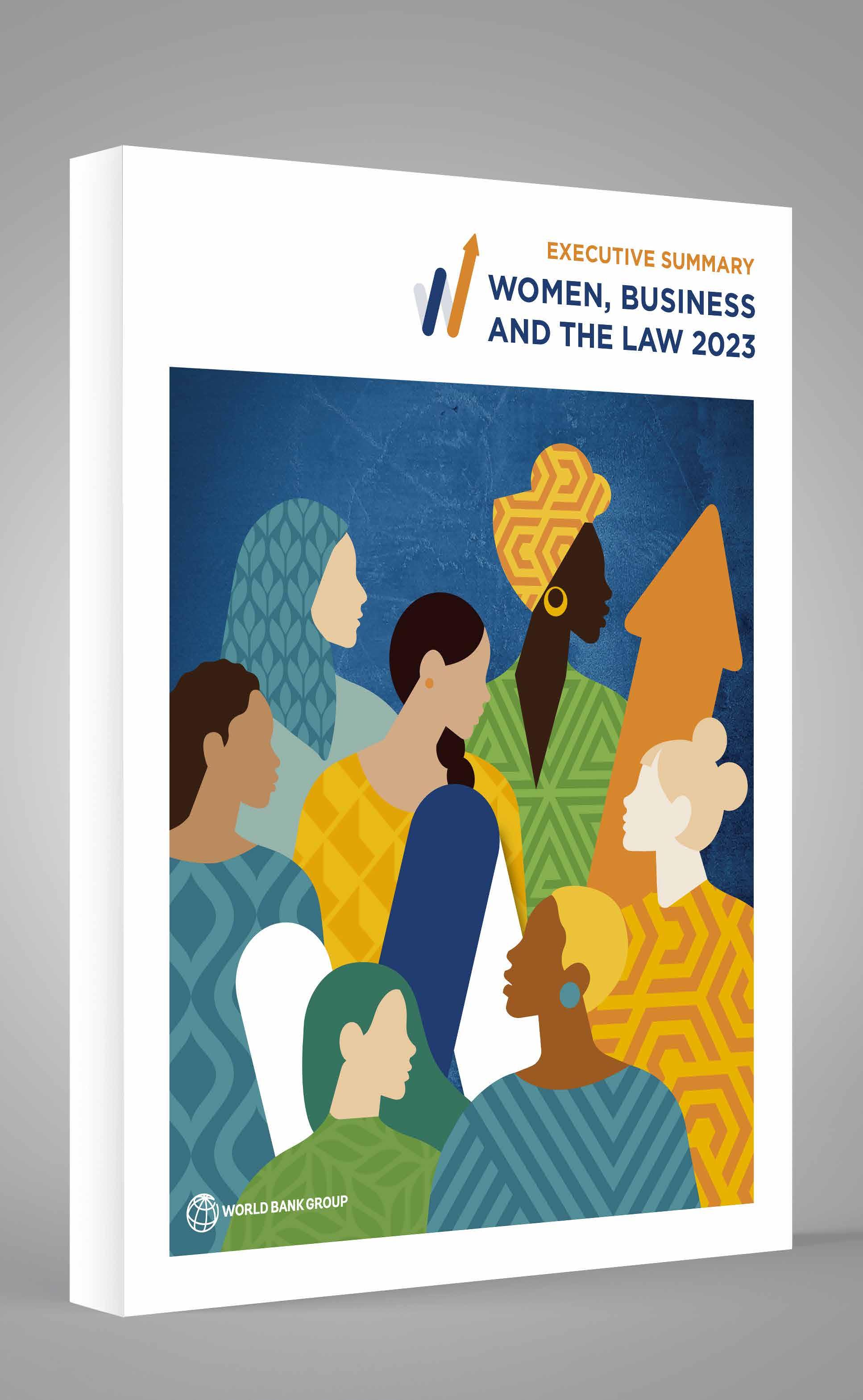

Global growth has slowed sharply and the risk of financial stress in emerging market and developing economies (EMDEs) is intensifying amid elevated global interest rates, according to the World Bank’s latest Global Economic Prospects report.
It identifies barriers to women’s economic participation and encourages reform of discriminatory laws. This year, the study also includes research, a literature review, and analysis of 53 years of reforms for women’s rights and makes an important contribution to research and policy discussions about the state of women’s economic empowerment.
The South Asia region (SAR) endured significant negative spillovers from rapid monetary policy tightening in advanced economies, weak growth in China, and the Russian Federation’s invasion of Ukraine. So far in 2023, the peak impact of these shocks appears to have passed, and regional economic conditions have improved.
Growth in the region is expected to slow marginally to 5.9 percent in 2023 and more significantly to 5.1 percent in 2024.
Growth in India is expected to slow further to 6.3 percent in FY2023/24 (April-March).
Journey from Pilots to National Scale-Up (2012–2021)
This working paper examines and documents early experiences and lessons from India’s TB Public Sector Engagement journey. While it is still too early to evaluate the impact of the transition, the story of how India transitioned from pilots to national scale-up holds lessons for other health programs and countries with similar TB burdens.
This paper examines the impact of Covid-19 on a host of labor market outcomes in India, using a continuous household survey. Cross-sectional trends of headline indicators like unemployment and labor force participation indicate a quick recovery after the unprecedented shock of the pandemic.
The Jharkhand State Livelihoods Promotion Society is rolling-out solar powered community lift irrigation systems to provide access to irrigation to 23,580 farming families in 13 districts of the state. This paper assesses these irrigation systems using data collected from 297 farmers in the command area of 50 randomly selected irrigation systems.
India has one of the largest and fastest-growing tertiary education systems in the world. Despite its size and growth rate, and the emphasis placed on tertiary education by Indian policymakers in recent times, the system has faced continuous challenges of equitable access, quality, governance, and financing, with the quality of inputs and outputs not keeping pace with the expansion of the sector. The report provides a summary of the outcomes of analytical work on the Indian tertiary education in the context of the proposed NEP reforms and international trends.
Debt moratoria that allow borrowers to postpone loan payments are a frequently used tool intended to soften the impact of economic crises. This paper reports results from a nationwide experiment with a large consumer lender in India, designed to study how debt forbearance offers affect loan repayment and banking
Using high- quality household survey data (the India Human Development Survey) on land ownership in rural districts of India, this paper provides the first evidence on the effects of market integration on land ownership inequality.
This paper uses an exogenous shock to wages from the world’s largest anti-poverty program to show that higher wages can lead to increased air pollution, likely by inducing farmers to shift into a labor-saving and mechanized production process. Using a difference-indifferences approach on the staggered roll-out of India’s Mahatma Gandhi National Rural Employment Guarantee Act (MNREGA), combined with data on nearly 1 million fires, the paper shows that the frequency of agricultural fires increases by 21 percent after the shock.
This paper identifies high-priority areas for methane emissions reduction and estimates recent emissions changes in those areas using atmospheric concentration data from the European Space Agency’s Sentinel-5P satellite platform. The modeling approach is illustrated
with three case studies: landfills in Spain (Madrid), irrigated rice production in India (Karnal district, Haryana state), and oil production in Iraq (Al Amarah district, Maysan governorate).
Gender-Based Discounts on Taxes Related to Property: Role in Encouraging Female Ownership — A Case Study of Indian States and Cities
In India, state and city governments are making a simultaneous push to increase revenues through property-related taxes and to offer tax incentives to female property owners. This dual policy approach
creates an opportunity to study the impact of genderbased tax incentives on property ownership patterns and tax compliance. This paper investigates linkages between gender-based discounts on taxes related to property (stamp duties and property taxes), female property ownership, and revenues from taxes related to property.
WPS10470
A New Distribution Sensitive Index for Measuring Welfare, Poverty, and Inequality
WPS10467
Examining Business Reform Committees : Findings from a New Global Dataset
WPS10466
Does Hotter Temperature Increase Poverty and Inequality ? Global Evidence from Subnational Data Analysis
WPS10463
Export Diversification from an Activity Perspective: An Exploration Using Occupation Data
WPS10465
Trade and Civil Conflicts
WPS10458 Bank Ownership and Firm Innovation
WPS10460
Measuring Tax Progressivity in Low-Income Countries
WPS10462
Are Carbon Taxes Good for South Asia?
WPS10461
Protecting Who ? Optimal Social Protection Responses to Shocks with Limited Information
WPAUS0003380
World - Supporting Effective Jobs Lending at Scale : Good Practices for Jobs Lending Operations Design
WPS10456
Using Paradata to Assess Respondent Burden and Interviewer Effects in Household Surveys : Evidence from Low- and Middle-Income Countries
WPS10454
Exporting and Technology Adoption in Brazil
WPS10453
Droughts and Deficits: The Global Impact of Droughts on Economic Growth
WPS10451
Measuring Globalization When It Is Needed the Most : A Long-Run Analysis
WPS10448
Adjusting to Transitory Shocks : Worker Impact, Firm Channels, and (Lack of) Income Support
WPS10449
Weighting Justice Reform Costs and Benefits Using Machine Learning and Modern Data Science
WP182142
Jobs, Food and Greening : Exploring Implications of the Green Transition for Jobs in the Agri-food System
WPS10445
Measuring Global Economic Activity Using Air Pollution
WPS10442
Gendered Impacts of Climate Change : Evidence from Weather Shocks
WPS10443
Are Vaccination Campaigns Misinformed?
Experimental Evidence from COVID-19 in Low- and Middle-Income Countries
WPS10438
A Review of Human Development and Environmental Outcomes
WPS10435
The Impact of Tax Blacklisting
WPS10432
Biodiversity and Finance : A Preliminary Assessment of Physical Risks for the Banking Sector in Emerging Markets
WPS1043
The Role of Global Value Chains for Worker Tasks and Wage Inequality
WPS10431
More Benefits, Fewer Children: How Regularization Affects Immigrant Fertility
WPS10430
The People’s Voice and Access to Sanitation
WPS10434
Labor Market Effects of Global Supply Chain Disruptions
WP182289
April 2023 Update to the Multidimensional Poverty Measure : What’s New
WPS10428
Fiscal Procyclicality in Commodity Exporting Countries : How Much Does It Pour and Why ?
WPS10429
Poverty Mapping in the Age of Machine Learning
WPS10427
International Tax Spillovers and Tangible Investment, with Implications for the Global Minimum Tax
WPS10426
Price Adjustments and Poverty Measurement
WPS10424
Uncertainty in Preferential Trade Agreements : Impact of AGOA Suspensions on Exports
WPS10423 Blackout or Blanked Out ? Monitoring the Quality of Electricity Service in Developing Countries
WPS10422
The Elusive Link Between FDI and Economic Growth
WPS10420
The Longer Students Were Out of School, the Less They Learned
WPS10418
Public Primary School Expansion, Gender-Based Crowding Out, and Intergenerational Educational Mobility
WPS10417
Leveraging Social Cohesion for Development Outcomes
WPS10414
Fit for (re)purpose ? A New Look at the Spatial Distribution of Agricultural Subsidies
WPS10410
Water Constraints to Agricultural Productivity in Bhutan
WPS10411
Climate Change, Urban Expansion, and Food Production
WP181547
Does Agricultural Intensification Pay?
WPS10412
Input Subsidies and the Depletion of Natural Capital : Chinese Distant Water Fishing
WPS10407
A Framework for the Economic Evaluation of Digital Health Interventions
WPS10409
Fiscal Policy Volatility and Growth in Emerging Markets and Developing Economies
WPS10406
Data Transparency and GDP Growth Forecast Errors
WPS10408
After Big Droughts Come Big Cities : Does Drought Drive Urbanization?
WPS10404
The ABCs of the Role of Public Transport in Women’s Economic Empowerment
WPS10402
Global Footprints of U.S. Energy Innovations: Energy Efficiency and the Shale Revolution
WPS10401
Commodity Price Cycles : Commonalities, Heterogeneities, and Drivers
WPS10403
Export Survival : The Role of Banks and Stock Markets
WPS10405
Does Agricultural Intensification Pay?
WPS10400
People's Unequal Exposure to Air Pollution : Evidence for the World's Coal-Fired Power Plants
WPS10399
The Effect of Agricultural Input Subsidies on Productivity: A Meta-Analysis
WPS10398
Distributional and Health Co-Benefits of Fossil Fuel Subsidy Reforms — Evidence from 35 Countries
WPS10397
Fossil Fuel Prices and Air Pollution : Evidence from a Panel of 133 Countries
WPS10394
Corporate Tax Rates, Allocative Efficiency, and Aggregate Productivity
WPS10377
Who Suffers the Most from the Cost-of-Living Crisis ?
WPS10396
Why Do People Move ? A Data-Driven Approach to Identifying and Predicting Gender-Specific Aspirations to Migrate
WPS10392
Is the Global Economy Deglobalizing ? And If So, Why? And What Is Next?
WPS10393
The Unintended Consequences of Curfews on Road Safety
WP181160
Integrating Air Quality Management and Climate Change Mitigation : Achieving Ambitious Climate Action by Cleaning the Air We Breathe
WPS10390
Identifying and Monitoring Priority Areas for Methane Emissions Reduction
Introducing E-Procurement in Bangladesh: The Promise of Efficiency and Openness
WP181699
Land at the Center of Inclusive and Sustainable Development : Volume 2 - Resource Property Rights in Forested Areas
General information
Email : indiainfo@worldbank.org
Tel: 91-11-41479301/2
Media Inquiries
The World Bank
70, Lodi Estate
New Delhi - 110 003
Email: mediaindia@worldbank.org
Tel: +91-11-4147 9220
For more Information
Global: www.worldbank.org
India: www.worldbank.org/in
Facebook: WorldBankIndia
Twitter: @worldbankindia
Rights and Permissions: The material in this work is copyrighted. No part of this work may be reproduced or transmitted in any form or by any means, electronic or mechanical, including photocopying, recording, or inclusion in any information storage and retrieval system, without the prior written permission of the World Bank. The World Bank encourages dissemination of its work and will normally grant permission promptly.